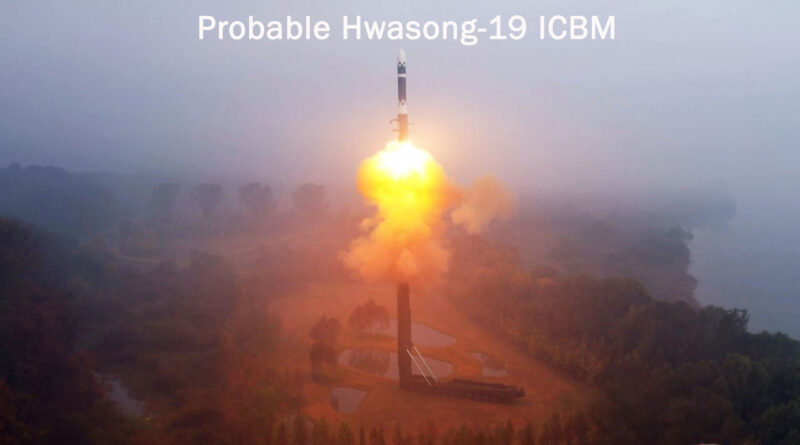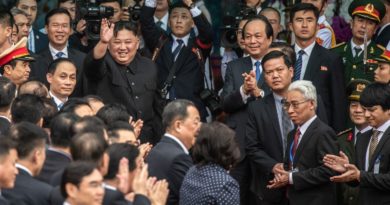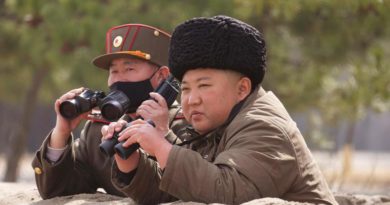North Korea Launches Probable Hwasong-19
On Thursday morning , North Korea launched a probable Inter Continental Ballistic Missile (ICBM) into the East Sea (Sea of Japan). According to US, South Korean, and Japanese officials — in accordance with the Camp David Commitment to Consult — North Korea launched the missile from a site near Pyongyang at 07:10 KST. Officials claimed the missile flew for a record 86 minutes, at a maximum altitude of 4,350 miles (North Korea claimed a maximum altitude of 4,776 miles), and traveled about 621 miles before landing in the waters west of Japan’s northern island of Hokkaido. North Korea conducted the missile test the day after the 56th Security Consultative Meeting (SCM) between senior defense and foreign affairs officials from the US and South Korea. While previous Joint Communiques released after these meetings have pledged to aim for the “complete denuclearization of the Korean Peninsula,” this year’s communique emphasized North Korea’s nuclear threat and the objective of delaying its nuclear development. In previous denuclearization talks, North Korea has understood the “complete denuclearization of the Korean Peninsula” to include a guarantee of keeping US nuclear weapons off the peninsula, and almost certainly views this shift in language as an unacceptable threat to its security posture.
Hwasong-18 ICBM
At 08:24 KST on December 18, 2023, North Korea launched its last ICBM test of a Hwasong-18 ICBM from a Transporter Erector Launcher (TEL). The Hwasong-18 is a three-stage solid-fueled ICBM with a maximum range of approximately 9,320 miles. Depending on the missile’s payload weight, this range would put any location in the US within striking distance. Additionally, the Hwasong-18 uses solid propellant, which allows the missile to be pre-fueled and stored for extended periods without degradation. The missile’s reduced maintenance overhead, in turn, allows missile forces to maintain a high state of readiness with less operational support. Coupled with TELs as the launch vehicles, North Korea’s deployment of Hwasong-18 missiles are road-mobile and more difficult to detect prior to launch.
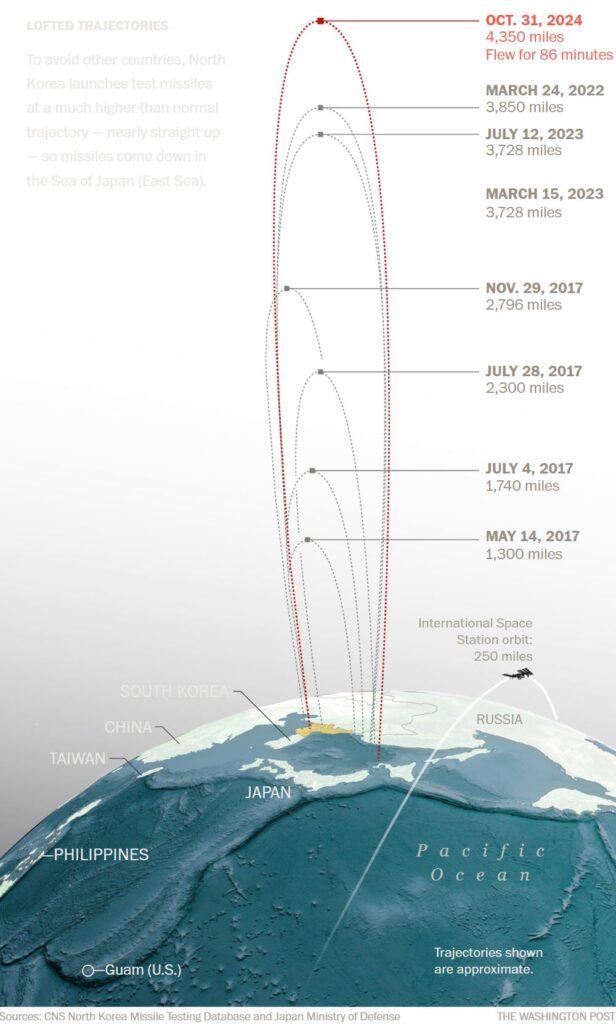
Source: Washington Post
North Korea first displayed the Hwasong-18 on February 08, 2023, during a military parade commemorating the 75th anniversary of the Korean People’s Army (KPA). Two months later, on April 13, 2023, North Korea conducted its first launch of the Hwasong-18 ICBM, which flew for 58 minutes and traveled about 621 miles before landing in the East Sea. Then, on July 18, 2023, North Korea successfully launched another Hwasong-18, which flew for 74 minutes, at a maximum altitude of 3,728 miles, and traveled about 621 miles before landing in the East Sea. Finally, the missile launched in December flew for 73 minutes, at a maximum altitude of 4,050 miles, and again traveled about 621 miles before landing northeast in the sea. After three successful tests, North Korea has almost certainly operationally deployed the Hwasong-18 ICBMs to its missile forces.
Probable Hwasong-19 ICBM
On November 01, 2024, the Korean Central News Agency (KCNA) published a statement indicating that North Korea’s strategic attack force successfully launched a new Hwasong-19 ICBM under the guidance of Kim Jong Un. The KCNA claimed the test was necessary due to escalation from threatening rival states, likely referencing recent US military exercises in the region, among other events that aggravate Pyongyang.
KCNA reported Kim Jong Un personally went to the launch site to plan for the test fire and took the central command post. Moreover, the state media organ released photos that appear to show Kim Jong Un and his daughter, Kim Ju Ae, overseeing the launch. Notably, Kim Ju Ae also accompanied her father to the December 2023 launch, likely indicating the elder Kim is preparing her for succession.
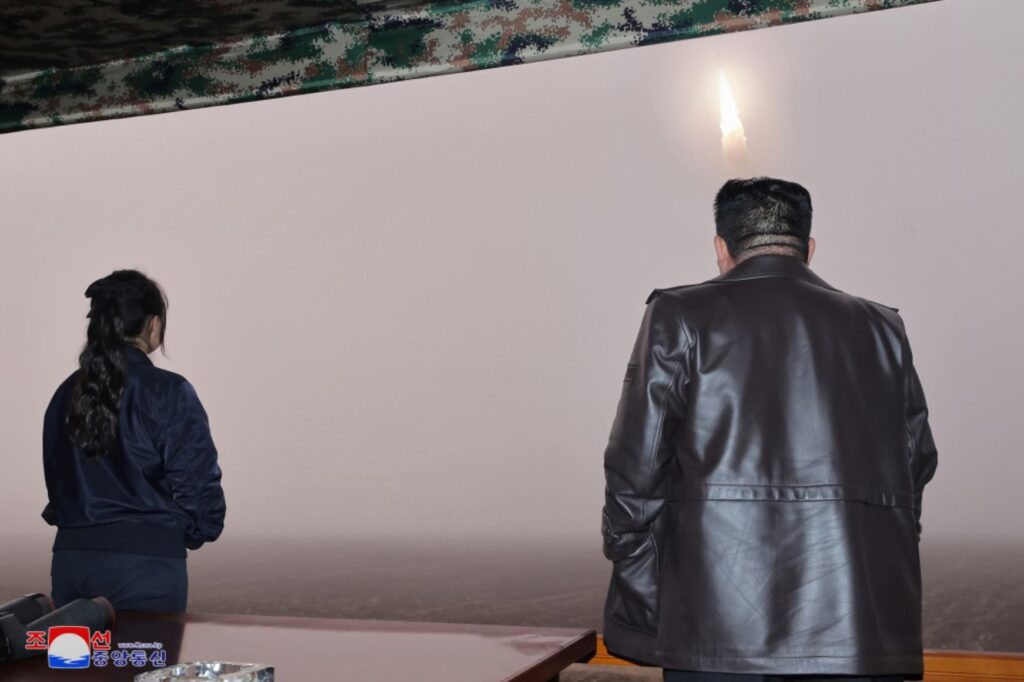
Source: KCNA
KCNA reported that General Jang Chang Ha, commanding general of the Missile General Bureau, gave the order to the Second Red Flag Company to launch the missile. The missile then flew for 86 minutes, at a maximum altitude of 4,776 miles, and traveled the standard 621 miles before landing in the East Sea.
The probable new Hwasong-19 is a likely solid-fueled three-stage ICBM fired from a road-mobile TEL. However, the missile could also be launched from other platforms, such as rail or launch pad.
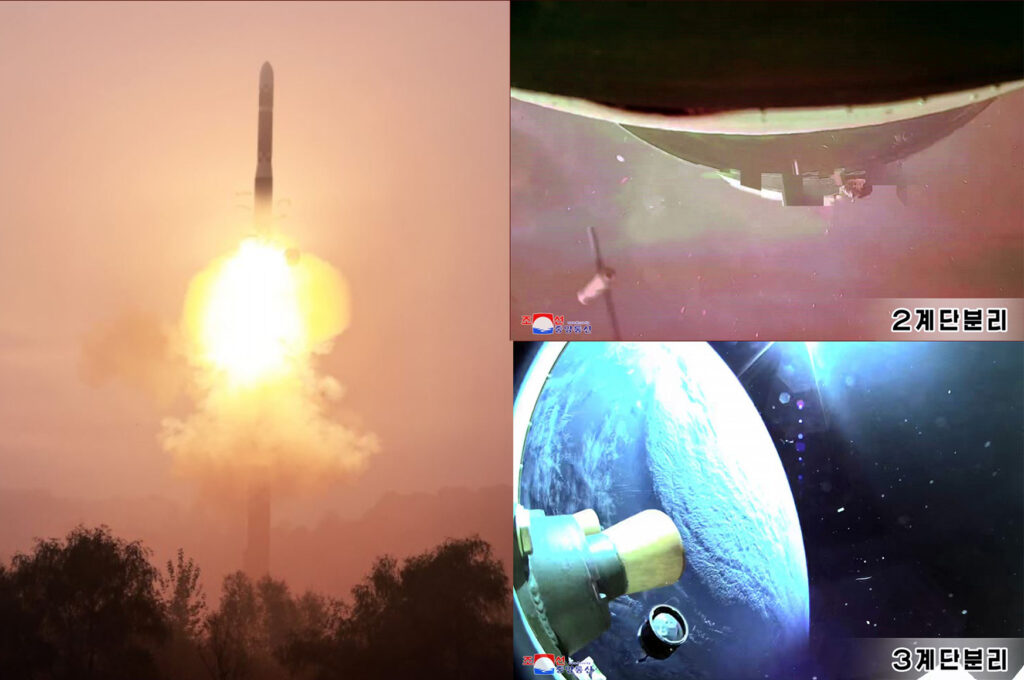
Source: KCNA, Three Stages
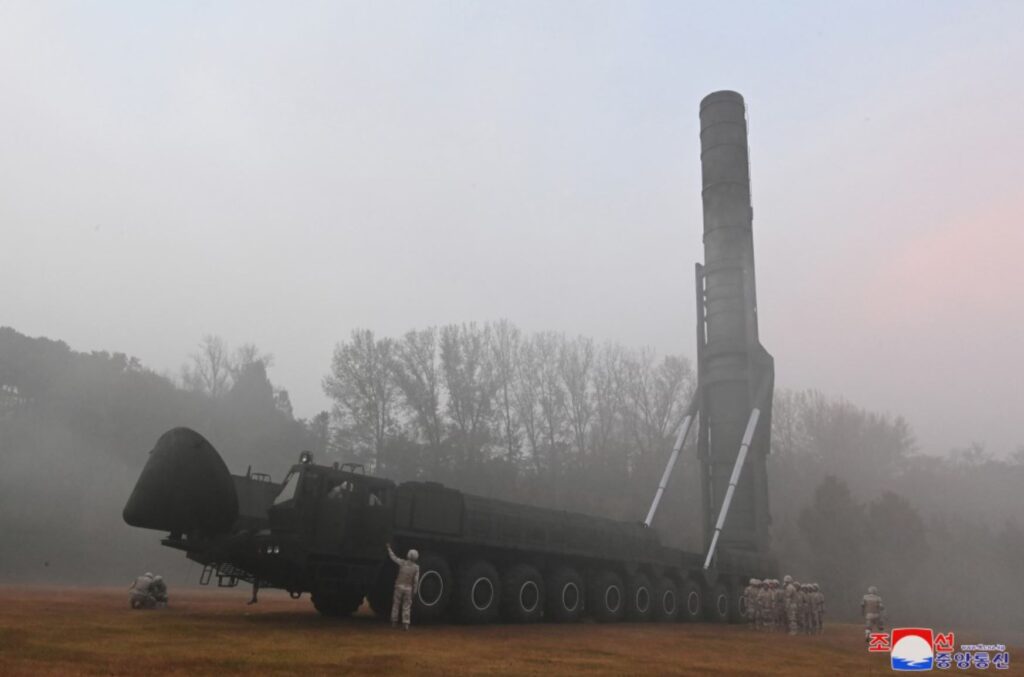
Source: KCNA
North Korea’s ability to extend the maximum range and flight time of this launch may be evidence of support from Russia, enabling the North Koreans to boost the engine thrust of their missiles. North Korea has reportedly aided Russia in its war with Ukraine via munitions shipments and, most recently, probable troop deployments. Consequently, Russia is highly likely to return the favor by assisting North Korea with its weapons programs. For example, last year, the US Treasury Department sanctioned Russia-based firm Intellekt LLC for allegedly supporting North Korea’s ballistic missile program.
Conclusion
North Korea’s latest ICBM launch came just one day after the 56th SCM Joint Communique between the US Secretary of Defense Lloyd Austin and South Korean Minister of National Defense Kim Yong Hyun was published. The SCM Joint Communique condemned “Russian-DPRK arms trade as clear violations of existing UN Security Council Resolutions” and noted “these actions present profound security challenges to the international community and pose an increasingly serious threat to peace and stability on the Korean Peninsula and throughout the Indo-Pacific region, as well as in the Euro-Atlantic region.” Unfortunately, the US’ policy in Ukraine and its attempt to isolate Russia has instead resulted in greater cooperation between Russia, Iran, North Korea, and China.
North Korea also chose to conduct its missile test less than one week before the US presidential elections, likely hoping to escalate tensions and coerce negotiations with the next US administration. North Korea has consistently stated it will not give up its nuclear weapons, which it views as a necessary deterrent for the survival of the state. While US policy has likewise consistently aimed at the “complete denuclearization of the Korean Peninsula” — language found in previous SCM Joint Communiques — the 56th Communique instead stated that the US and South Korea “pledged to continue coordinating efforts to deter DPRK’s nuclear threat with the Alliance’s overwhelming strength, while continuing to pursue efforts through sanctions and pressure to dissuade and delay DPRK’s nuclear development.” The shift in language hints at a wide gap between the US and South Korea’s position regarding security on the Korean Peninsula vis-à-vis North Korea’s position, which the North Koreans view as existential.

